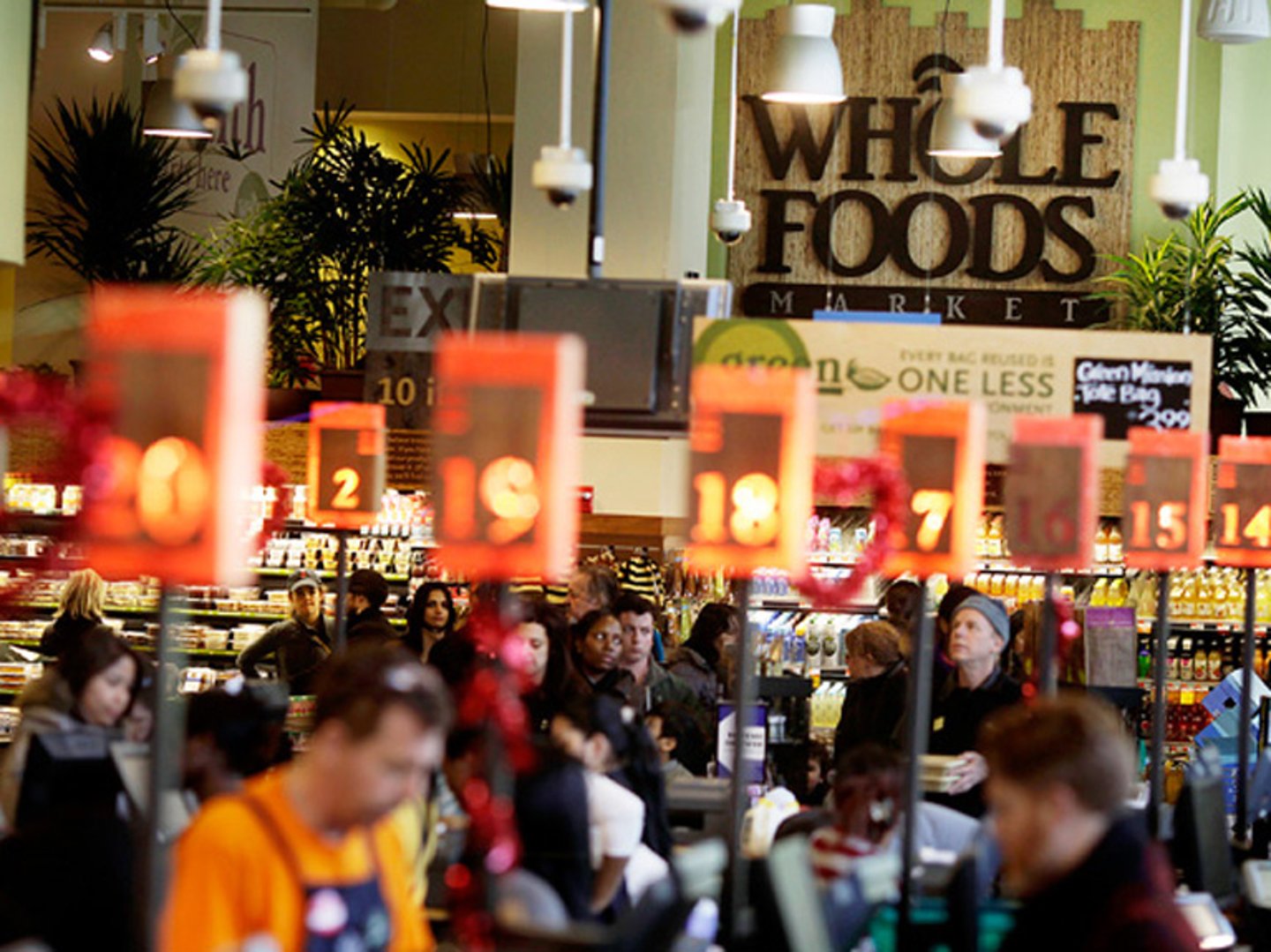Study: Amazon’s impact on Whole Foods proves mixed
Customer behavior at Whole Foods Market has changed since the 2017 Amazon purchase, and it’s not entirely a good or bad thing.
According to a new analysis of shopper behavior at Whole Foods stores during the first quarter of 2019 from inMarket, total customer visits increased 16.5% from the same quarter in 2018. inMarket cites Amazon incentivizing its 100 million Prime members with special perks as helping to boost store foot traffic.
However, despite increasing overall foot traffic, the influx of Amazon Prime customers does not appear to be attracting new shoppers. inMarket analysis indicates the number of new shoppers at Whole Foods has decreased by 2.5% from Q1 2018. While 2018 was a strong year for bringing in new shoppers, inMarket says Whole Foods has slowed down on this strategy, and is instead focusing on developing plans to retain current shoppers.
In addition, the number of microvisits of less than five minutes grew by 10% year-over-year. inMarket analysis suggests this may be due to the increased rate of additional Amazon pickup lockers and streamlined online order pickups for quick in-and-out trips. Concurrently, shoppers who enter Whole Foods locations are spending less time there. According to inMarket, this may be a byproduct of the increase in microvisits, as shoppers who are just above the five-minute threshold for microvisits might be affecting the average dwell time.
The five brands with the highest volume growth during Q1 2019 at Whole Foods were Organic Valley, Organic Girl, Chobani, Kevita, and Driscoll’s. No brands for pantry or dry packaged foods, such as granola bars or cereal, placed among the top five. inMarket concludes that Whole Foods shoppers are buying brands which largely focus on perishable and/or refrigerated items, confirming that its customers demand a fresh, healthy selection of food.
According to a new analysis of shopper behavior at Whole Foods stores during the first quarter of 2019 from inMarket, total customer visits increased 16.5% from the same quarter in 2018. inMarket cites Amazon incentivizing its 100 million Prime members with special perks as helping to boost store foot traffic.
However, despite increasing overall foot traffic, the influx of Amazon Prime customers does not appear to be attracting new shoppers. inMarket analysis indicates the number of new shoppers at Whole Foods has decreased by 2.5% from Q1 2018. While 2018 was a strong year for bringing in new shoppers, inMarket says Whole Foods has slowed down on this strategy, and is instead focusing on developing plans to retain current shoppers.
In addition, the number of microvisits of less than five minutes grew by 10% year-over-year. inMarket analysis suggests this may be due to the increased rate of additional Amazon pickup lockers and streamlined online order pickups for quick in-and-out trips. Concurrently, shoppers who enter Whole Foods locations are spending less time there. According to inMarket, this may be a byproduct of the increase in microvisits, as shoppers who are just above the five-minute threshold for microvisits might be affecting the average dwell time.
The five brands with the highest volume growth during Q1 2019 at Whole Foods were Organic Valley, Organic Girl, Chobani, Kevita, and Driscoll’s. No brands for pantry or dry packaged foods, such as granola bars or cereal, placed among the top five. inMarket concludes that Whole Foods shoppers are buying brands which largely focus on perishable and/or refrigerated items, confirming that its customers demand a fresh, healthy selection of food.

